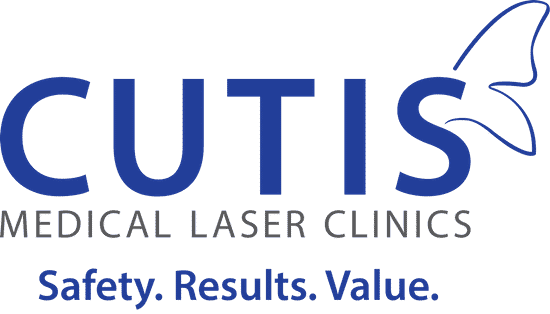While rosacea is a common condition that affects around 415 million people worldwide, there are still lots of misconceptions around it. These myths can sometimes stand in the way of better understanding the condition and effectively managing it. Continue reading as we dive a little deeper and dispel the most common myths about rosacea.
The basics
Rosacea is a chronic inflammatory disease that causes persistent facial redness. It can make the skin look like it is blushed or sunburnt with visible facial veins or broken blood vessels. Rosacea has different subtypes with symptoms that can also vary depending on the severity of the condition.
The most common symptoms of rosacea include:
- Facial flushing or redness
- Visible facial veins or small blood vessels
- Small papules and pimples
- Thickened skin
- Nasal bumps or enlarged nose
- Eye irritation (sore, itchy, dry, or watery eyes)
The exact cause of rosacea is not known. It is believed that both genetic and environmental factors play a role in the development or increasing the risk of developing rosacea, as well as triggering its symptoms. Studies also suggest that those with rosacea are more likely to have a family history of the disease than those without the condition.
There are, however, some known factors that may trigger rosacea. These include:
- Sunlight
- Wind and cold
- Spicy foods
- Excessive alcohol consumption
- Anger, stress, embarrassment
- Certain medications (corticosteroids and high blood pressure drugs)
5 common myths about rosacea
If you or your loved one has rosacea or exhibiting some of its symptoms, it is important to separate fact from fiction. Here are the 5 common myths about rosacea.
Myth 1: Rosacea is associated with poor hygiene.
Rosacea is an inflammatory and vascular condition; it is not caused by poor hygiene or having an oily or dirty face. In fact, scrubbing the skin, over washing the face, and using harsh cleansers can only exacerbate the redness and related symptoms. Having a healthy skin care regimen, however, is essential in managing rosacea.
Myth 2: Caffeine worsens rosacea.
It is not necessarily the caffeine that causes facial redness, but more likely the heat from hot or steaming coffee. In fact, a 2018 study published in JAMA Dermatology revealed that coffee might even reduce the risk of rosacea. Moreover, increased caffeine consumption from tea, soda, and chocolate had no impact on the likelihood of having rosacea.
Myth 3: Rosacea is the same as acne
Subtype 2 or papulopustular rosacea causes pus-filled red bumps and pimples on the cheeks, chin, and forehead. These are often misdiagnosed as acne because of the way they look. These bumps, however, have a different underlying cause and need to be treated differently. Acne medication may not help treat this type of rosacea.
Myth 4: Drinking alcohol or eating spicy foods causes rosacea.
Both habits can trigger redness or flushing, but they don’t necessarily cause rosacea. It is also worth noting that even those who don’t or never drink can still develop rosacea. Alcohol and spicy foods have nothing to do with the onset of said condition. Limiting the consumption of both, however, can help prevent further facial flushing.
For further reading: Take it Easy on the Booze: How Alcohol Affects Your Skin
Myth 5: Rosacea is curable.
Currently, there isn’t a cure for rosacea. There are, however, treatment options and lifestyle changes that can prevent flare-ups or keep the condition under control. There are oral and topical options, as well as laser procedures that can treat some rosacea symptoms.
Cutis Rosacea Treatment Package
At Cutis, we have our rosacea treatment package, which features laser and light-based procedures, that can improve or address symptoms. These include:
Limelight Photo Facial – uses intense pulsed light (IPL) to revitalize the skin and target pigmentation. It delivers intelligent pulses of light customized to your skin tone, which then draws the brown spots and helps stimulate collagen production. It can improve several rosacea symptoms and other skin concerns, such as:
- Tiny facial veins or broken blood vessels
- Facial flushing or redness
- Fine lines and wrinkles
- Sun damage
Laser Vein Reduction – uses pulses of laser energy to target and treat broken blood vessels on the face. It can also be used to treat spider veins and varicose veins on the legs. Results can appear between two to six weeks, depending on the size and color of the veins.
What the procedure does is cause the blood within the vein to coagulate. This destroys the vein, which the skin reabsorbs later. It then redirects the blood flow deeper below the surface of the skin, where it is supposed to be.
Laser skin rejuvenation – uses laser technology to heat the upper dermis and boost collagen for complete skin rejuvenation. It also generates extra heat in dilated capillaries to reduce or improve skin redness. Laser skin rejuvenation can be used on the face, neck, decolletage, shoulders, and hands. It can improve:
- Skin redness
- Broken blood vessels or tiny facial veins
- Enlarged pores
- Sun damage
- Pigmentation
- Scarring
- Fine lines and wrinkles
For further reading: Managing Rosacea: How Can You Avoid Flare-Ups?
Schedule a consultation
If you’re dealing with facial redness, visible facial veins, and associated symptoms, we can help. Contact Cutis Medical Laser Clinics in Singapore today to learn more about our Rosacea Treatment Package or schedule a consultation with one of our aesthetic doctors.
- If you would like to be an informed patient, please contact us at +65-6801-4000 or
cutis@cutislaserclinics.com. - Cutis Medical Laser Clinics, 9 Scotts Road Pacific Plaza, Scotts Medical Center #08-07, Singapore – 228210
+65-6801-4000 - cutis@cutislaserclinics.com
